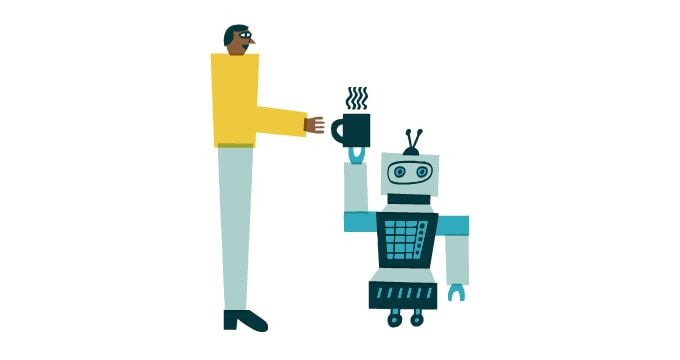Machine learning in customer service is used to provide a higher level of convenience for customers and efficiency for support agents. Support-focused customer analytics tools enabled with machine learning are growing in popularity thanks to their increasing ease-of-use and successful applications across a variety of industries. Gartner predicts that by 2021, 15 percent of customer service interactions will be handled completely by artificial intelligence.
Despite its growing popularity, there’s still a lot of confusion concerning how artificial intelligence, and more specifically machine learning, fits within our current understanding of customer service. So let’s clear some of that up.
Data insights delivered
First, a quick definition: machine learning is a kind of artificial intelligence that uses layers of algorithms to “learn” from the data its processing. While artificial intelligence is more a catch-all term for simulating human intelligence, machine learning deals more with how a machine acquires information and understands the rules for how it should be used, and how it may become better at it over time.
Successful machine learning applications are applied in areas that involve processing lots of data, as is necessary when the end-goal is to make an educated decision. Humans aren’t well-equipped to process constant streams of data like algorithms can—we generally have better things to do, like working directly with frustrated customers. For the sake of efficiency in customer service, it’s more preferable for human support agents to glean insights from data when we can.
Machine learning in customer service takes that idea a bit further: it applies discovered insights in ways that can optimize the customer experience. It can be something that makes support agents more knowledgeable (like through predicted analytics) or efficient (like when an AI-powered tool can handle remedial customer issues all on its own).
A focus in self-service
Self-service refers to when a customer finds the support they need and resolves their issue with interacting with a human agent. Surveys have indicated that 81% of customers would prefer to help themselves rather than speaking to a support agent. Accordingly, many companies have increased their self-service offerings as a way to provide a better customer experience. One of the easiest methods for providing self-service is to build out a knowledge base.
Self-service has proven to be a common use case for machine learning applications—chatbots, virtual assistants, and many other AI-enhanced tools are able to “learn” and simulate interactions with customer service agents. Some of these applications use deep learning—an advanced kind of machine learning—to continually improve, resulting in more accurate and helpful automated assistance to users.
How is machine learning being used in customer service?
Chatbots
Chatbots are what come to mind for many when discussing AI technology in customer service. Their ability to simulate an interaction with a customer service representative and resolve simple inquiries is an effective self-service solution. Machine learning enables chatbots to learn when they should use specific responses, when they should gather necessary information from users, and when they should hand off a conversation to a human agent.
Virtual assistants
Virtual assistants are different from chatbots in how they don’t try to simulate an interaction with an agent. Instead, they focus on specific areas in the customer journey where they can provide assistance to the customer. When enabled with machine learning capabilities, they can learn what kind of information they can pass along to agents (or saved to be used in analytics programs) and enhance the kind of assistance they provide. An example is Zendesk’s Answer Bot, which recommends help articles based on a customer inquiry. It can also automate how agents find help articles as well.
Content creation
Nearly 40% of customers claim that searches within knowledge bases don’t generate the help articles they’re looking for. Machine learning can be used to analyze the data that comes in from support tickets and turn them into actionable insights for agents to apply to help articles. Those insights point out how users describe their issues and if those descriptions are similar to the content of the knowledge base. Agents can then take those recommendations and adjust the help articles, making them more relevant and easier for customers to find.
Predictive analytics
Customer service needs measurable analytics in order to continually optimize, and machine learning can help add a predictive element to some support analytics. Predictive customer service analytics utilizes data from previous customer service interactions to determine what the quantitative results may be in the future. It can also work in real-time to catch insights that agents might miss, as is the case with Zendesk’s Satisfaction Prediction tool that predicts a customer’s CSAT rating. Having these insights can be a great help to customer service organizations that want to deliver better customer experiences.
